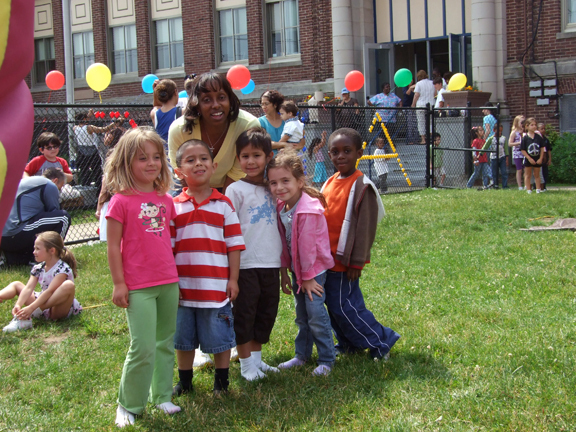Big gains in universal pre-k
Number 4 School principal says nearly all children have increased their reading ability
As the fourth school year of universal pre-kindergarten at District 15’s Number Four School gets underway, its principal says that students’ reading skills have greatly improved and that nearly all of them can recognize lowercase letters, a skill essential to reading, by the time they enter kindergarten.
“That’s a lot of hard work on the staff’s part,” said Dr. Ann Pedersen, principal of the Lawrence school. “It’s a wonderful program housed in a beautiful facility that supports developmentally appropriate practices, and addresses the increased academic demands.”
In June 2006, the Lawrence Board of Education approved funding for universal pre-K, which provides a full five days of schooling for all 4- and 5-year-old children in the district. Up to that point, Number Four offered only targeted pre-K, which serviced the most needy members of the community. Three years after universal pre-K began, the more mixed socio-economic student population has led to gains for the entire class, educators say.
Ninety-eight percent of exiting pre-K students can recognize lowercase letters, up from 84 percent in the last year of targeted pre-K in 2005-06, and 80 percent in the first year of universal pre-K, 2006-07, according to Pedersen. She attributed the dip that year to what she called an “adjustment period.”
Lowercase letters, Pedersen explained, have more similarities to each other than capital letters and are harder for children to distinguish.
“When we just had the targeted pre-K, we didn’t have as many role models,” said Aliesia Forte, who has taught pre-K at the Number Four School since 1995. “When we mixed the children together, their peers became better role models for each other and better reinforcement for what we’re teaching. We never liked having the children in separate programs. The mix is great for everyone involved.”

 65.0°,
Mostly Cloudy
65.0°,
Mostly Cloudy 




